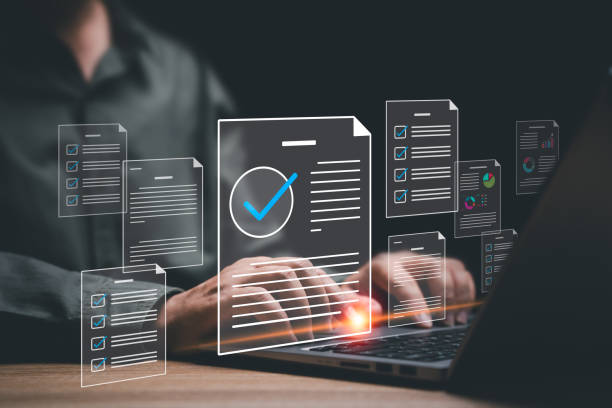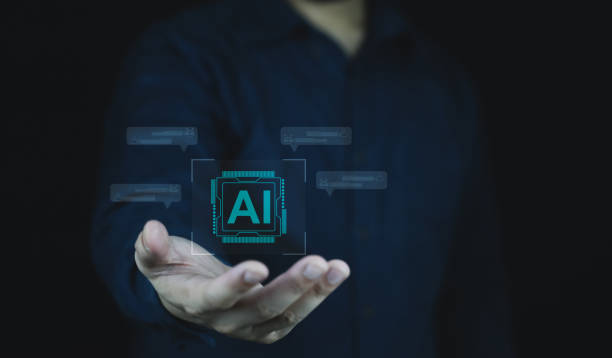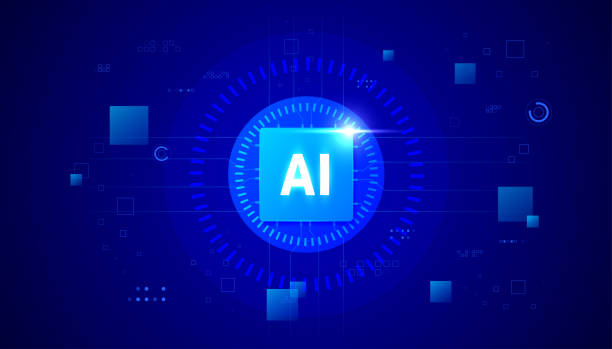`
What is Technical SEO and Why Does it Matter?
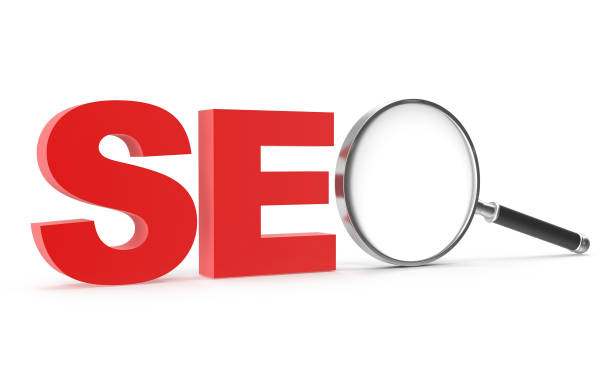
Technical SEO refers to a set of actions taken to optimize the structure and infrastructure of a website so that search engines like Google can easily crawl, index, and understand the website.
The main goal of technical SEO is to create a healthy and accessible website for search engine robots.
This type of SEO is the foundation for other SEO strategies such as on-page SEO and off-page SEO.
The importance of technical SEO is that without a strong infrastructure, other SEO efforts may be fruitless.
If search engines cannot properly index your website, your quality content will not be seen and your website’s ranking in search results will be low.
Optimizing site speed, using a proper URL structure, creating an XML sitemap, and optimizing the mobile version are among the most important aspects of technical SEO.
Also, paying attention to #site_security and using the HTTPS protocol are important in this regard.
A site with strong technical SEO also provides a better user experience.
This makes visitors stay on your site longer and reduces the bounce rate.
These positive signals show Google that your site is useful to users and helps improve your ranking.
Tired of losing business opportunities due to not having a professional company website? Don’t worry anymore! With Rasaweb’s corporate website design services:
✅ Your brand’s credibility and professionalism increase.
✅ You attract more customers and sales leads.
⚡ Get a free consultation to get started now!
Crawling and Indexing; The Key to Understanding Search Engines

Crawling and Indexing are two essential steps in the process of understanding and ranking websites by search engines.
Crawling refers to the process by which search engine robots (such as Googlebot) examine web pages and follow the links within them.
These robots use complex algorithms to collect the content of pages and store information about them.
In fact, crawling is the first step in identifying and registering your website in the search engine index.
After crawling, the indexing stage begins.
At this stage, search engines analyze the collected information and store it in their database.
This information includes text, images, videos, links, and other elements found on web pages.
Indexing allows search engines to quickly and efficiently find the information users need and display it in search results.
If your website is not properly indexed, it will not be seen in search results and you will lose organic traffic.
To ensure that search engines properly crawl and index your website, you should pay attention to things like URL structure, XML sitemap, Robots.txt file, and internal linking.
Also, checking Google Search Console reports can help you identify and fix crawling and indexing issues.
Optimizing Site Structure and URLs

Site structure and URLs play an important role in technical SEO.
An organized and logical site structure helps search engines easily find and understand your website’s pages.
Also, optimized URLs can provide useful information to users and search engines about the content of the page.
To optimize site structure, you should use a hierarchical architecture.
This means that the main pages of the website should be at a higher level and the sub-pages should be in the relevant subcategories.
This structure helps search engines understand the relationship between different pages and determine the importance of each page.
Also, creating an XML sitemap and registering it in Google Search Console can help improve the crawling and indexing of your website.
Optimized URLs should be short, descriptive, and contain relevant keywords.
Avoid using long and complex URLs that contain special characters and numbers.
Optimized URLs should show users and search engines what the page content is about.
For example, instead of using a URL like `example.com/page?id=123`, use a URL like `example.com/blog/seo-technical`.
Here are two HTML tables, one showing a good site structure and the other showing a bad site structure:
| Level | Pages |
|---|---|
| 1 | Homepage |
| 2 | Category 1, Category 2 |
| 3 | Product 1, Product 2 |
| Level | Pages |
|---|---|
| 1 | Homepage |
| 2 | Page with incomprehensible name |
| 3 | Page with many parameters |
The Importance of Site Speed and Its Optimization

Site speed is one of the most important factors in SEO and user experience.
Users expect web pages to load quickly, and if the site is slow, they may leave it.
Search engines also consider site speed as one of the ranking factors.
Therefore, optimizing site speed can help improve your ranking in search results and increase user satisfaction.
To optimize site speed, you can use various methods.
Optimizing images, reducing the size of CSS and JavaScript files, using a CDN (Content Delivery Network), enabling Gzip compression, and using caching are among the most important of these methods.
Also, choosing a quality and optimized hosting can have a big impact on your site’s speed.
Using tools like Google PageSpeed Insights and GTmetrix can help you identify and fix problems with your site’s speed.
These tools provide detailed information about your site’s performance and offer solutions to improve it.
Is your online store ready to attract maximum customers and increase sales? Rasaweb transforms your online business with modern and efficient online store design.
✅ Increased speed and improved SEO
✅ Excellent user experience on mobile and desktop⚡ Get a free online store design consultation from Rasaweb!
Mobile Version Optimization and Mobile-First Indexing

Given the increasing use of mobile devices to search the internet, optimizing the mobile version of the website has become particularly important.
Google has officially used Mobile-First Indexing since 2019.
This means that Google considers the mobile version of your website as the primary version for indexing and ranking.
Therefore, if your website is not optimized for mobile devices, you may lose your ranking in search results.
To optimize the mobile version, you should use Responsive Design.
This type of design allows your website to automatically adapt to the screen size of different devices.
Also, you should use images and videos optimized for mobile and improve page loading speed on mobile devices.
In addition, you should pay attention to the user experience on mobile devices.
Using readable fonts, large and touchable buttons, and preventing the display of annoying ads are among the things that can improve the user experience on mobile devices.
Also, checking the website’s performance on different mobile devices and fixing potential problems can help improve your ranking in search results.
The Importance of HTTPS and Website Security
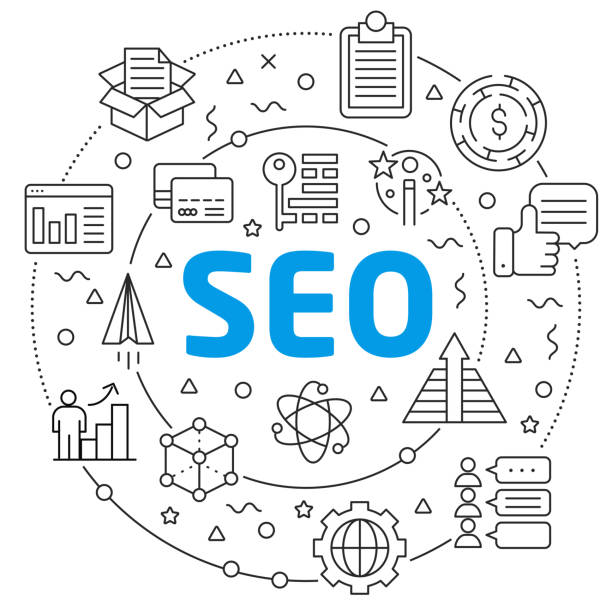
Website security is a vital aspect of technical SEO that should not be overlooked.
Using the HTTPS (Hypertext Transfer Protocol Secure) protocol instead of HTTP (Hypertext Transfer Protocol) adds a layer of security to your website and ensures that information is transferred between the user’s browser and the website’s server in an encrypted manner.
This prevents hackers from accessing users’ sensitive information such as usernames, passwords, and credit card information.
Google has officially considered HTTPS as one of the ranking factors since 2014.
Therefore, using HTTPS can help improve your website’s ranking in search results.
In addition, HTTPS shows users that your website is secure and earns their trust.
This can lead to an increase in conversion rate and a decrease in bounce rate.
To enable HTTPS, you need to obtain an SSL (Secure Sockets Layer) certificate and install it on your website server.
After installing the SSL certificate, you need to change your website settings so that all traffic is directed via HTTPS.
Also, you should change all internal and external links of your website to HTTPS to avoid problems related to Mixed Content.
XML Sitemap and Robots.txt

The XML Sitemap and Robots.txt file are two important tools in technical SEO that help search engines crawl and index your website more effectively.
An XML sitemap is a text file that contains a list of all the important pages of your website.
This file shows search engines which pages exist on your website and how they are linked to each other.
By providing an XML sitemap to search engines, you can help them index your website completely and faster.
The Robots.txt file is a text file that is located in the root of your website and instructs search engines which pages of your website should not be crawled and indexed.
This file can be used to prevent duplicate pages, unnecessary pages, and pages with sensitive content from being indexed.
By using the Robots.txt file, you can help search engines use their resources more efficiently and focus on the more important pages of your website.
| Feature | Description |
|---|---|
| Location | Exact page path |
| Priority | Page index priority |
| Last update | Time of last change on the page |
| Command | Description |
|---|---|
| User-agent | Search engine name |
| Disallow | Paths that should not be indexed |
Fixing Crawler Errors

One of the most important aspects of technical SEO is identifying and fixing crawler errors.
Crawler errors refer to problems that prevent search engines from properly crawling your website.
These errors can lead to a decrease in your ranking in search results and loss of organic traffic.
Some of the most common crawler errors include 404 errors (page not found), 500 errors (server error), chained redirects, and broken links.
To identify crawler errors, you can use tools like Google Search Console and Screaming Frog SEO Spider.
These tools help you create a complete list of errors on your website and examine the cause of their occurrence.
After identifying the errors, you should fix them quickly.
To fix 404 errors, you can use 301 redirects to redirect users and search engines to new pages.
To fix 500 errors, you should contact your hosting support team and resolve server-related issues.
Also, you should find broken links and replace them with new and valid links.
Fixing crawler errors helps improve the health of your website and increase your chances of gaining a high ranking in search results.
Does your current online store design not deliver the sales you expect?
Rasaweb specializes in professional online store design!
✅ Attractive and user-friendly site aimed at increasing sales
✅ High speed and security for an ideal shopping experience⚡ Get a free online store design consultation with Rasaweb!
Duplicate Content and Canonicalization

Duplicate content is a common problem in SEO that can harm your website’s ranking.
Duplicate content refers to pages that have similar or identical content.
These pages can exist within your website (internal duplicate content) or on other websites (external duplicate content).
Search engines may get confused in determining which page should be ranked, and this can lead to a decrease in the ranking of all duplicate pages.
To prevent problems related to duplicate content, you can use the Canonicalization method.
Canonicalization refers to a process in which you announce to search engines which page among the duplicate pages should be considered as the main page.
This can be done using the `rel=”canonical”` tag in the `
By using this tag, you tell search engines which is the main page and all the link equity and ranking signals should be transferred to that page.
In addition to using the `rel=”canonical”` tag, you can use other methods such as 301 redirects and the use of URL parameters to prevent the creation of duplicate content.
Also, creating unique and quality content can help reduce the risk of problems related to duplicate content.
Monitoring and Continuous Improvement of Technical SEO

Technical SEO is an ongoing process and should not be considered as a one-time project.
After performing the initial optimizations, you should regularly monitor the performance of your website and look for opportunities for further improvement.
Using tools like Google Analytics and Google Search Console can help you track your website traffic, check the performance of your keywords, and identify SEO-related problems.
Regularly check Google Search Console reports to be informed of crawling errors, indexing issues, and website security issues.
Also, checking site speed, mobile performance, and other aspects of technical SEO helps you identify and fix potential problems.
Due to the constant changes in search engine algorithms, you should always be looking for new and effective ways to optimize your website.
Improving the technical SEO of your website is a continuous process that requires constant effort and attention.
By following up regularly and using appropriate tools, you can prepare your website for success in search results.
SEO is a repeating event
Frequently Asked Questions
| Question | Answer |
|---|---|
| What is SEO? | SEO, or Search Engine Optimization, is a process to increase the quality and quantity of website traffic by improving the site’s ranking in the natural (organic) search results of search engines such as Google. |
| What are the main types of SEO? | SEO is divided into three main categories: On-Page SEO, Off-Page SEO, and Technical SEO. |
| What does On-Page SEO include? | On-Page SEO includes optimizing elements within the website, such as keywords, Title Tag, Meta Description, content, URL structure, images, and internal links. |
| What is Off-Page SEO? | Off-Page SEO refers to activities outside of the website that help improve its ranking, such as Backlink Building, social media marketing, and Brand Mentions. |
| What is Technical SEO? | Technical SEO deals with optimizing the technical aspects of a website to help search engines crawl and index it better. This includes site speed, mobile-friendliness, site structure, Sitemaps, and the Robots.txt file. |
| What role do Keywords play in SEO? | Keywords are phrases that users enter into search engines. Using relevant keywords correctly and purposefully in the content and site elements helps search engines understand the topic of your page and display it in related searches. |
| What is a Backlink and why is it important? | A backlink, or inbound link, is a link from one website to another. Backlinks act as a “vote of confidence” from other sites for search engines and play an important role in the credibility and ranking of the site, especially if they are from reputable sites. |
| What effect does quality content have on SEO? | Quality, relevant, comprehensive, and unique content not only attracts and retains users but also shows search engines that your page is valuable. This helps improve ranking, reduce Bounce Rate, and increase the time users spend on the site. |
| Why is site loading speed important for SEO? | Site loading speed is an important ranking factor for Google. Faster sites provide a better user experience, have lower bounce rates, and are preferred by search engines. |
| Is SEO a one-time process? | No, SEO is a continuous and long-term process. Search engine algorithms are constantly changing, competition is increasing, and the content of the site also needs to be updated. Therefore, SEO requires continuous monitoring, analysis, and optimization. |
And other services of Rasa Web Advertising Agency in the field of advertising
Smart Marketplace: Designed for businesses looking to increase sales by customizing the user experience.
Intelligent Content Strategy: A creative platform to improve customer behavior analysis with marketing automation.
Intelligent Digital Advertising: An effective tool for campaign management by optimizing key pages.
Intelligent Custom Software: A fast and efficient solution to improve SEO ranking with a focus on SEO-oriented content strategy.
Intelligent SEO: A dedicated service for growing campaign management based on the use of real data.
And more than hundreds of other services in the field of internet advertising, advertising consulting and organizational solutions
Internet Advertising | Advertising Strategy | Reportage Ad
Resources
What is Technical SEO?
,Technical SEO Guide: How to Improve Website Ranking
,Technical SEO | Comprehensive Guide
,Technical SEO Checklist: How to Perform a Complete Site Audit
? In Rasa Web Digital Marketing Agency, your digital dreams come true with our expertise. From professional SEO optimization to secure website design and creative advertising campaigns, we are your partner in the digital world.
📍 Tehran, Mirdamad Street, next to Central Bank, Kazerun South Alley, Ramin Alley No. 6
`

